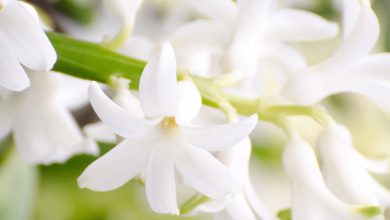Yellow Bugs on Plants: Beneficial or Harmful?
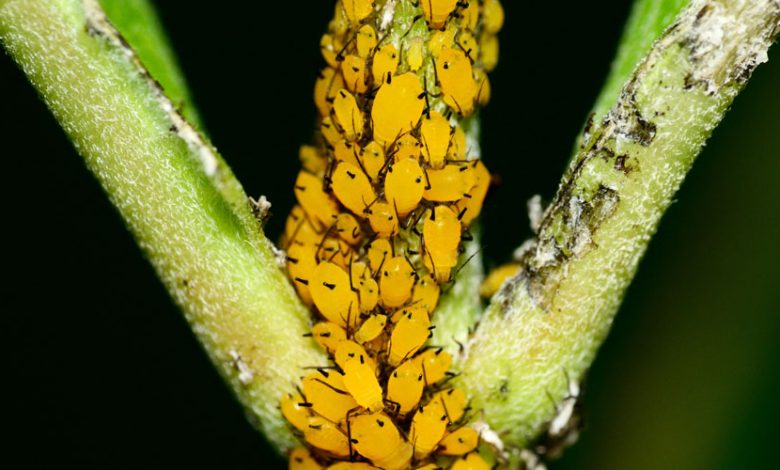
Hello to all agrohuerters! In today’s article we will learn to identify the yellow bugs that we find in our plants. In addition, I will give you some tips to differentiate which insects are harmful and which yellow insects are beneficial for the garden. Go for it!

Are yellow bugs beneficial or harmful?
Before introducing you to each of today’s yellow bugs, we must differentiate between insects that can be our allies in the garden (auxiliary insects or natural enemies of pests) and harmful insects.
Normally, nature is wise and knows how to distribute the colors among the insects. The most striking colors such as yellow or red usually correspond to beneficial insects for the garden. However, as always, there are exceptions that we will see below.
In this case, today’s insects can be classified as follows:
- Beneficial insects: bees, wasps, hoverflies, spiders and ladybugs.
- Pest insects: yellow aphid and cucumber beetle.
bees and wasps
We start with bees and wasps, both groups belonging to the order Hymenoptera. As you know, both insects are plant pollinators and, therefore, beneficial for our crops. However, of both species, bees are the pollinators par excellence (of all the insects that pollinate, bees correspond to 85%). There are hundreds of different species.
We must try to promote the presence of pollinators as much as possible because without them agriculture would be nothing. For this reason, many phytosanitary products that have been shown to harm these insects are currently being banned. In addition, artificial homes are being built for these insects in order to encourage their installation.
Here I leave you a photo of one of these homes for bees that I found in a park in France:
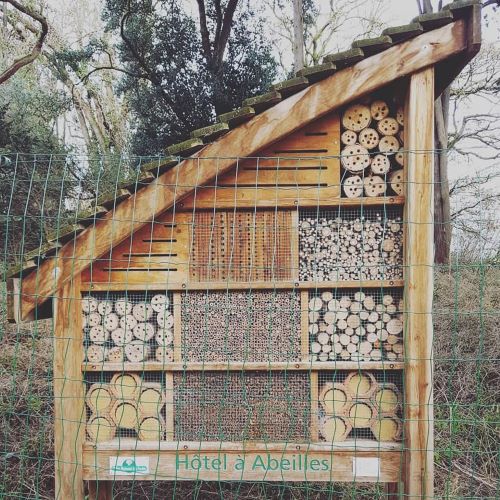
hoverflies
Hoverflies are a group of insects of the order Diptera. There are 900 different species in Europe. They present different colors (yellow, orange, white or green) and the appearance of the adults is mimetic (very similar) to that of certain wasps or bees to protect themselves from their predators.
Adult hoverflies consume nectar and pollen, and the larvae have varied diets: predators (mainly aphids, about 30 aphids a day), saprophagous or phytophagous. They usually lay eggs near aphid colonies.
The population of hoverflies can be favored by an abundant flowering that lasts for a whole year, but also by hedges, abundant grass or residual weeds.

Differences between hoverflies, bees and wasps
Although these insects can visually confuse us, I am going to give you some tips to be able to differentiate them easily:
- Bees and wasps belong to the order Hymenoptera, unlike hoverflies which belong to the order Diptera ( like flies).
- Hoverfly antennae are shorter and eyes larger than those of wasps and bees. Male hoverflies differ from females by having their eyes close together.
- In addition, hoverflies make constant changes of direction when they fly, unlike bees or wasps.
yellow spiders
Oh the spiders, the spiders… that have made us go through nightmares. I must admit that before studying the Agronomist degree I was terrified of them.
There are thousands of different species of spiders. Most are predators of other insects thanks to their speed and their spider webs. Therefore, if we see some spiders in our garden or plots, it is better not to bother them because they are there to help us.
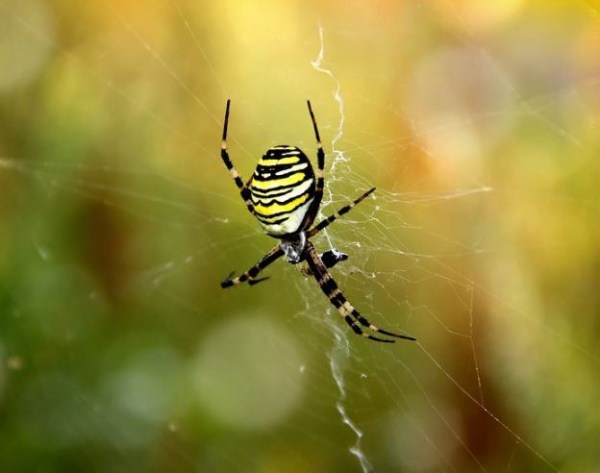
Yellow ladybug: the ladybug that eats powdery mildew
When they talk to us about ladybugs (or ladybugs), the image of a red bug with black dots always comes to mind. However, there are many species of different colors (red, orange, black, yellow,…).

Today I am going to talk to you about a yellow ladybug with black dots that is known in the scientific world as Psyllobora vigintiduopunctata. What is special about this ladybug? Well… apart from standing out for its color, it stands out because it eats one of the fungi that most attack our plants: powdery mildew. It can also feed on other types of fungi such as mildew.
Therefore, unlike other ladybugs, this time they have changed aphids for fungi. Amazing!
I also leave you a photo of the larva of these yellow ladybugs. Like the adults, they feed on plant fungi.
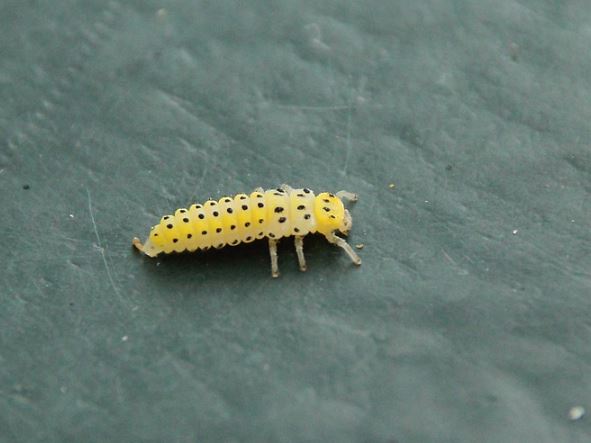
yellow aphids
We start with the insects that are harmful to our plants. Looking at the photo, it sounds the same to you… It is indeed a yellow aphid. Aphids, as we have seen in other previous articles, can have different colors (green, yellow, red, black,…).
In this case, I present to you a yellow aphid called Aphis nerii, also known as the oleander aphid. When they bite the plants they acquire toxic substances to protect themselves from their predators. Therefore, they use the color yellow to «warn» their enemies that they should be careful.
To control aphids you can take a look at this article: « Everything you need to know about aphids «.
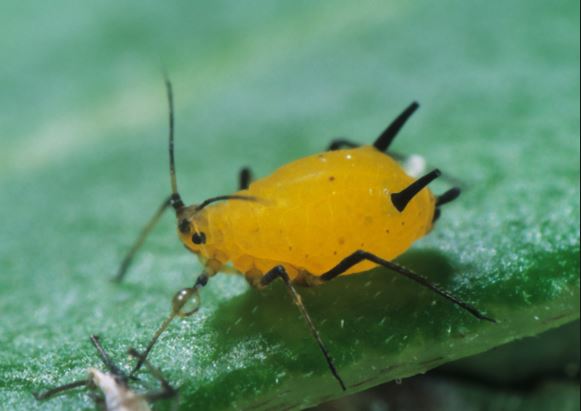
yellow cucumber beetle
The yellow cucumber beetle does not go unnoticed. It is another of the harmful yellow bugs in the garden. It has an intense yellow color with black dots and large antennae. Apart from cucumber plants, it also attacks other types of cucurbits such as pumpkin or courgette.
Both larvae and adults feed on leaves. In addition, it can act as a vector of viral (for example, mosaic virus) or bacterial diseases.
A strong plague of this insect can ruin our harvest, so we must pay attention. Among the most used ecological methods to combat it, the following stand out: crop rotation, placing trap crops (big max pumpkin or classic melon), straw mulching, eliminating weeds and residues.
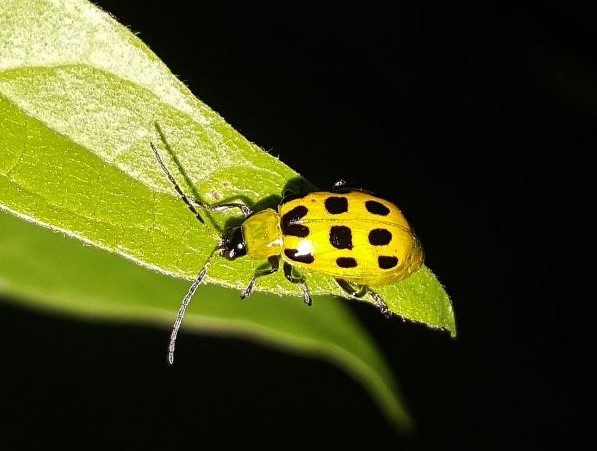
References
- Ministry of agriculture, fishing and food. (2014). Integrated Pest Management Guide, Pome Fruit Trees.
- Simon, JC, & Peccoud, J. (2018). Rapid evolution of aphid pests in agricultural environments. Current Opinion in Insect Science, 26, 17–24.
- Phytoma. (2014).Pome and stone fruit aphids.
This is all for today agrohuerters, I hope you liked the article and that, from now on, you know how to identify the yellow bugs that you find in the garden. See you in the next article.
Have a nice day!

![Photo of Saffron Pests and Diseases: [Detection, Causes and Solutions]](https://www.complete-gardening.com/wp-content/uploads/2022/08/saffron-pests-and-diseases-detection-causes-and-solutions-390x220.jpg)
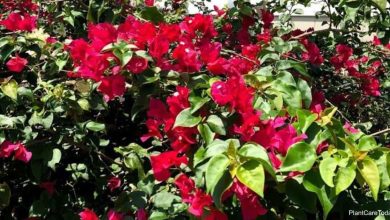
![Photo of Chinese Money Plant: [Planting, Care, Watering and Substrate]](https://www.complete-gardening.com/wp-content/uploads/2022/08/chinese-money-plant-planting-care-watering-and-substrate-390x220.jpg)
